Open-Water Technique Tips & Drills
Open-water swimming is a challenging and rewarding sport, both on its own and as a component of activities such as triathlon. It also comes in handy when you take an unplanned swim while surfing, paddleboarding, or kayaking.
“Swimming is one of the best forms of aerobic exercise,” says Charlotte Brynn, a marathon swimmer and elite-level coach. “It conditions the heart and lungs, builds muscular strength and endurance, and delivers a total-body workout without the joint stress.”
Unlike swimming in a pool, open-water swimming requires environment-specific sensory engagement, a unique challenge.
“There’s no lane line, so sighting is one of the biggest issues, along with the ability to swim in a straight line,” explains Troy Jacobson, an Arizona-based endurance coach and former pro triathlete. “The more the athlete zigzags, the less efficient he or she is,” wasting energy and potentially becoming disoriented.
Fear of this disorientation, as well as fear of exhaustion and possible drowning, prevents many people from enjoying the sport.
“Leaving the controlled environment of a pool and not having a black line at the bottom is an adjustment,” says Brynn. “But it doesn’t have to be a deterrent. Starting out slowly with a short distance in calm waters close to shore where you can stand up is a terrific way to ease into it safely.”
Make sure you are comfortable before wading into larger — and potentially rougher — bodies of water. Heed weather conditions, including wind and precipitation. In oceans, especially, time your swim to avoid rocks, currents, and swells as the tide goes out. And steer clear of swimming during low tide. You could find yourself farther away from land and safety — and paddling in much deeper water — when the tide comes back in.
Swimming in fair weather and in locations monitored by lifeguards are other important safety precautions. So is having the right gear, notes Olympic gold-medal triathete Gwen Jorgensen: “Do your goggles work if there is a massive glare off the water from the sun?” If not, replace them.
With safety concerns settled, you can calmly focus on sighting, breathing, and form: Swimming with your head up is one of the most common pitfalls, says Brynn. This can be fixed with a few simple drills performed in the pool and in open water, along with core exercises at home or in the gym.
To stay calm in the face of fear, incorporate a meditation practice if you don’t already have one.
Braving even moderately choppy water builds strength and stability through the midline of the body, facilitates a calmer mind from breathing rhythmically, and encourages a better mood from connecting with nature and overcoming challenges.
“You get an opportunity to develop grit combating waves, winds, and currents courtesy of Mother Nature,” says Brynn. “Open-water swimming provides a blend of ‘swimmer’s calm’ and ‘swimmer’s struggle’ to make you stronger in the water — and in other areas of your personal and professional life.”
Our experts share more tips on training for open-water swimming.
Open-Water Technique Tips & Drills
Drill 1: Rhythmic Breathing
Breathing calmly and rhythmically not only helps you use oxygen more efficiently, but also helps steady the body and mind. Additionally, this style of breathing helps keep you calm in the moment and over time boosts lung capacity. Keep these pointers in mind:
- Inhale through your mouth when your head is out of the water.
- Exhale through your mouth or nose while your head is underwater.
- Take a breath every two or three strokes, and practice with your head turned in both directions.
Drill 2: Core Training
Training the midsection, from shoulders to hips, improves performance, helps you hold a good body position, and reduces the risk of injury, says Brynn. She recommends the Superman for stronger back extension, which will help keep you buoyant and swimming in a straight line, and planks for overall stability and control through the core.
Superman
- Lie face-down, with arms extended overhead and your neck in a neutral position.
- Squeeze your glutes and press your hips into the floor; your legs will begin to rise off the floor.
- Maintaining the glute engagement, raise arms and legs off the floor as far as you comfortably can, without overarching the spine.
- Hold for three seconds, and release.
- Repeat for two sets of 10 reps, focusing on lifting and lowering with control. Rest for 20 to 30 seconds between sets.
Plank
- Assume a high pushup position, with your hands beneath your shoulders (you can also start on your forearms). You will be supported by your hands, arms, and balls of your feet, with your body straight from head to heels.
- Brace your abs to protect your lower back.
- Hold for 20 to 40 seconds. Rest for 20 seconds and repeat for two or three sets.
Drill 3: Sighting in the Pool
Brynn recommends beginning your sighting practice in the pool, where it’s easier to compensate if you go off course. This drill trains the brain to sight instinctively, she says, so you have one less thing to worry about when you hit open water.
- Place an object (such as a kickboard or noodle) at the end of the lane.
- Begin swimming freestyle, maintaining your regular stroke cycle.
- After a few strokes, and while your lead arm is extended forward, gently press down on the water to raise your head slightly to look for the object. But stay as low as possible — think “alligator eyes,” says Brynn. This will help you maintain the best possible body position: hips and legs close to the surface.
- Once you see your object, lower your head and continue swimming. If you don’t see the object, don’t panic. Put your head back down, take a few strokes, and try again.
- Swim 6 x 50 meters or yards.
Drill 4: Sighting in Open Water
Maintaining a straight line is one of the most important — and difficult — aspects of open-water swimming, Jacobson explains. This drill helps you learn to sight in different directions by sighting off a kayak. When you keep your head down and breathe to the side, you’ll swim faster and straighter. An added bonus: Holding a streamlined position will further strengthen your core.
- Recruit a friend with a kayak to serve as your navigator.
- Swim alongside the kayak; if the kayaker moves to the right, then you follow.
- Continue the drill for 30 minutes.
|
Open-Water Gear Essentials
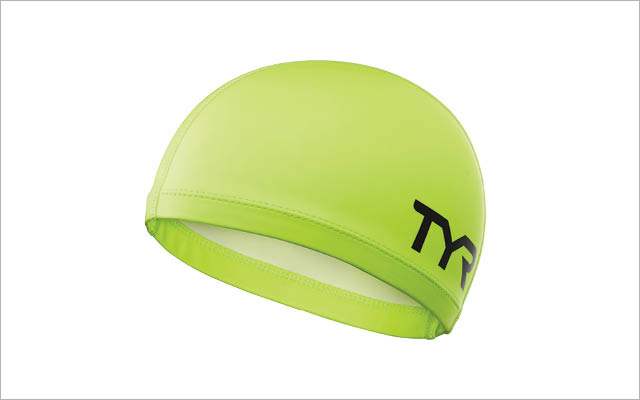
TYR HI-VIS WARMWEAR SWIM CAP
Thermal swim caps are essential for Olympian Gwen Jorgensen to ward off cold temperatures in open-water swimming. This fluorescent-yellow model ensures boats can see you while you’re training. $10 at www.tyr.com.
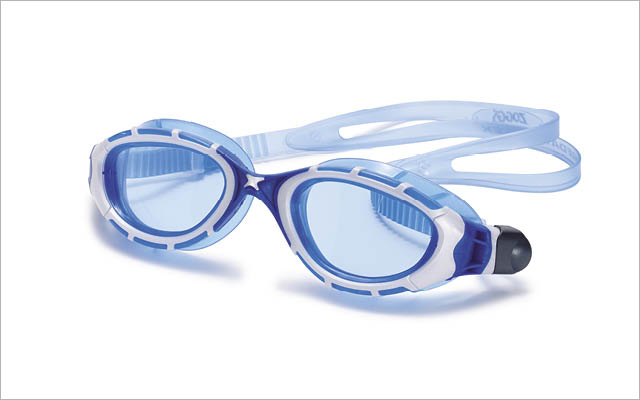
ZOGGS PREDATOR FLEX 2.0 GOGGLES
Coach Charlotte Brynn says these goggles provide the perfect lens tint while their silicone-injected rims offer an excellent seal and swimmer comfort. $35 at www.zoggsusa.com.

ORCA SONAR WETSUIT
“Wetsuits provide additional warmth, buoyancy, speed, and a sense of comfort that swimming without them doesn’t deliver,” says Brynn. The versatile Orca Sonar features a balance of buoyancy and flexibility. $449 at www.orca.com.
This originally appeared as “C’mon In — the Water’s Fine” in the July/August 2019 print issue of Experience Life.
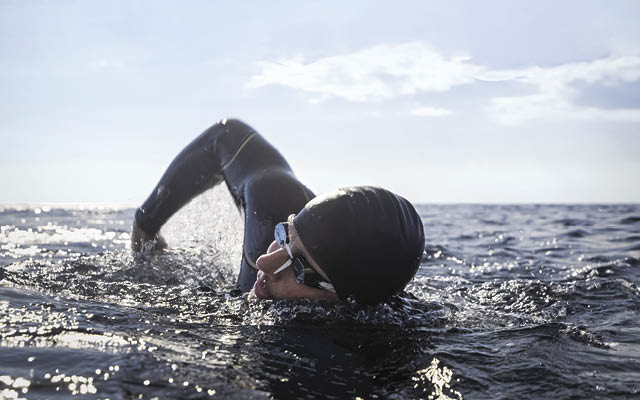
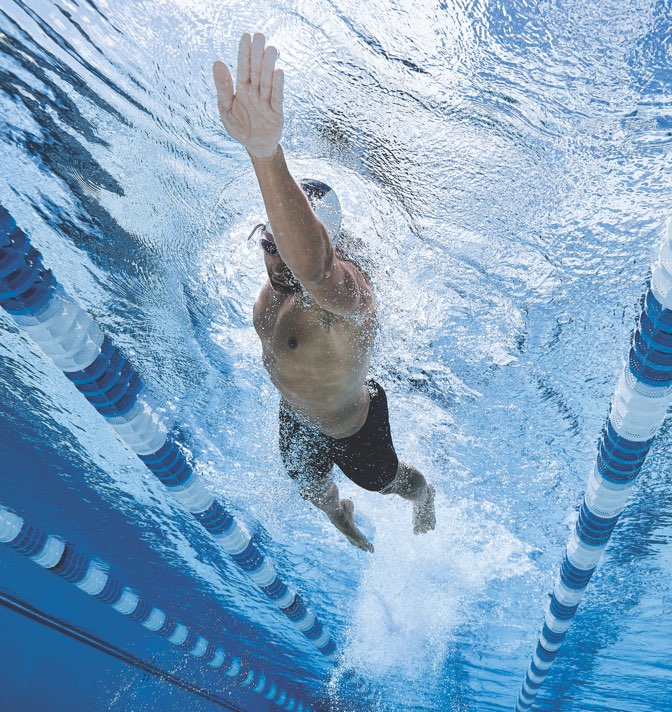
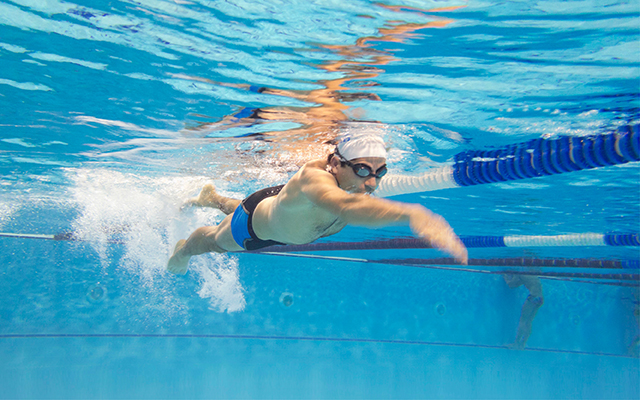
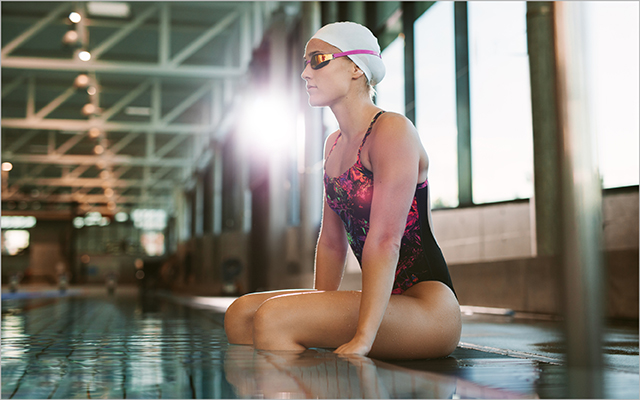
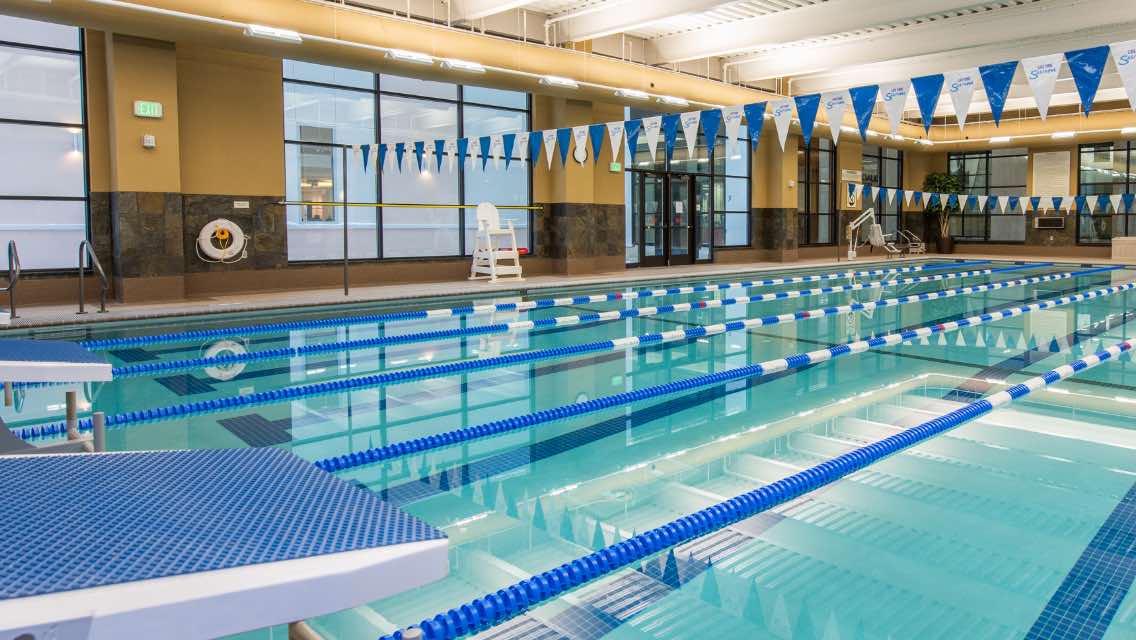
This Post Has 0 Comments